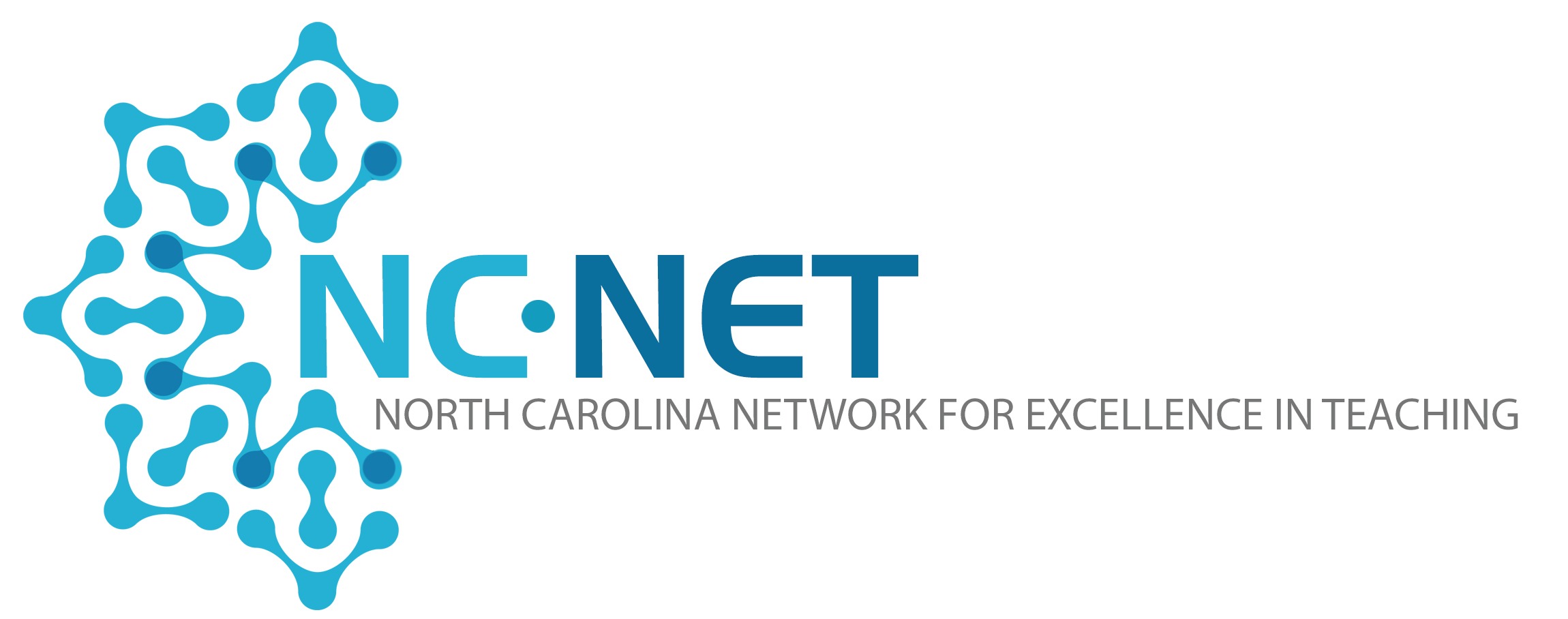Professional Development
Self-Paced Content
Adjunct Faculty Roadmap
Thank you for sharing your talent and expertise with students in the North Carolina Community College System. You’re a vital part of our team and as such, you deserve support as you strive for excellence in the classroom. Whether you’re new to teaching or would just like a refresher, the Adjunct Faculty Roadmap offers an overview of essential tools for effective teaching.
About the Content
Within the Roadmap you’ll find a collection of resources on topics important to teaching at the college level. "A Week at a Glance" is a great place to start, followed by the six major sections containing descriptions of the topic and helpful links with examples and strategies, expert advice, articles, and supporting evidence.
A Week at a Glance
Week 1: Starting the Semester Right
- Consider using a syllabus contract.
- Teach content beginning the first day of the course to set the stage for the rest of the semester.
- Train your students to sign a roll sheet each day (in person or virtually through an online log).
Week 2: Building Rapport with Your Students
- Make sure to learn your students’ names.
- Establish a course routine.
- For face to face courses, engage students outside the classroom; hallway contact matters. For online courses, try to offer frequent and meaningful virtual feedback.
Week 3: Assess Early and Often
- Studies show that students need opportunities to learn how our courses work and what they need to do to be successful.
- Assign a brief writing assignment or a smaller assessment so students begin earning grades as early as possible.
- Design assignments that will lead students toward successful behaviors and skills.
Week 4: Develop Study Accountability Techniques
- If you assign homework, a group review exercise that connects to a completion/participation grade offers incentive.
- Devise guided reading assignments that encourage textbook or resource reading.
- Conduct quick note checks or quizzes.
Week 5: Promote Study Skills
- Utilize a course calendar and stay on schedule.
- Introduce campus or E-learning resources such as tutoring or the library.
- Encourage study groups among your students.
Week 6: Consider Using an Online Supplement in F2F-Only Settings
- Post all grades in the gradebook provided in Moodle or Blackboard to allow students to monitor their status in your course.
- Send group email announcements to your classes or connect individually with students.
- Encourage students to access your site by providing classroom documents.
Week 7: Encourage Campus Activities or Involvement
- Forward campus announcements to your students.
- Offer small amounts of extra credit for students who attend content suitable events.
- Take classes to campus events when appropriate.
Week 8: Mid-term Review
- Provide your students with a mid-term average.
- Meet individually (virtually is ok!) with all students with borderline grades.
- Outline a plan for success for the rest of the semester.
Week 9: Promote Active Learning
- Try new activities in your courses since most studies show students only retain 5% of lecture material.
- Use visual aids and quick feedback quizzes to engage students.
Encourage discussion.
Week 10: Incorporate Group Work
- Conduct small group discussions prior to larger group discussions.
- Assign group presentations for the end of the semester.
- Provide good clear instructions and time for preparation.
Week 11: Follow Your Syllabus Policies
- While students may have good excuses this late in the semester, stick to your policies.
- Remember anytime you accommodate one student, you should do it for all students.
- Set the stage now for final grades, make sure students know how their final average will be calculated.
Week 12: Keep Your Supervisor in the Loop
- Notify your supervisor of any potential issues.
- Maintain good attendance and grade records.
- Document thoroughly any student issues you may have.
Week 13: Gearing Up for the End of the Semester
- Evaluate your course calendar and plan out the rest of your semester.
- Do not encourage study cramming by lecture cramming – set a reasonable pace.
- Check your records; are all forms completed?
Week 14: Prepare Your Students for Finals
- Provide students with final exam schedules.
- Review project guidelines and due dates.
- Remind students of their averages and meet with borderline students.
Week 15: Surviving and Thriving During Finals
- Stick to your schedule; there should be no surprises for you or your students.
Grade ahead; make sure you will only be grading exams during this week. - Design exams that can be graded in a timely manner.
Week 16: Finishing Out the Semester
- Be aware of campus deadlines.
- Turn in grades on time.
- Keep accurate copies of your grades and attendance; these are legal documents.
Prepared for NC-NET by the Adjunct Institute at Alamance Community College
Creating a Syllabus
 A syllabus is an important communication tool created by a course instructor to provide an overview of the course. It should include an outline of the topics covered in the course and details such as: course objectives and goals, assignments and due dates, grading criteria, attendance policies, expectations/class rules, and professor contact information (office hours and location). At the first class meeting, you should give students a copy of the syllabus and then review it carefully with them. Remember, a well-written syllabus will answer many student questions and will set the standard for what you expect throughout the semester.
A syllabus is an important communication tool created by a course instructor to provide an overview of the course. It should include an outline of the topics covered in the course and details such as: course objectives and goals, assignments and due dates, grading criteria, attendance policies, expectations/class rules, and professor contact information (office hours and location). At the first class meeting, you should give students a copy of the syllabus and then review it carefully with them. Remember, a well-written syllabus will answer many student questions and will set the standard for what you expect throughout the semester.
Developing an Effective Course Syllabus
UNC Center for Effective Teaching and Learning
Suggestions for Creating a Good Syllabus
Baruch College Faculty Handbook
Writing a Syllabus
Austin Community College District (includes a checklist, examples, and a repository)
Constructing a Syllabus: A Checklist
Washington University in St. Louis Center for Teaching and Learning
Syllabus Template
Randolph Community College
Creating a Syllabus That College Students Will Read and Use
Article by Sherri Singer, Alamance Community College
Tips for Creating a More Inclusive Syllabus
Ginger R. Fisher, PhD, and Susan M. Keenan, PhD
Constructing a Learner-Centered Syllabus: One Professor’s Journey
Aaron S. Richmond, Metropolitan State University of Denver
Measuring the Promise: A Valid and Reliable Syllabus Rubric
Article by Palmer, Bach and Streifer highlighting the focal points of syllabus design
Tips for Faculty Teaching for the First Time
Center For Teaching and Learning, Washington University in St. Louis
A Successful First Day
 The beginning of a course can be stressful for both students and instructors. Being well prepared will reduce anxiety and make the first day of class productive and successful. That first day sets the tone for the rest of the semester, so you'll want to introduce the course, outline your expectations, and review the syllabus in detail. This can be done in a variety of ways to meet the needs of seated, online and hybrid course formats. Be sure to encourage student feedback and questions. Remember to talk about yourself as well as the course, so that students get to know you. They need to know that you are accessible and willing to help them succeed.
The beginning of a course can be stressful for both students and instructors. Being well prepared will reduce anxiety and make the first day of class productive and successful. That first day sets the tone for the rest of the semester, so you'll want to introduce the course, outline your expectations, and review the syllabus in detail. This can be done in a variety of ways to meet the needs of seated, online and hybrid course formats. Be sure to encourage student feedback and questions. Remember to talk about yourself as well as the course, so that students get to know you. They need to know that you are accessible and willing to help them succeed.
Five Things to Do on the First Day of Class
Maryellen Weimer, PhD, Faculty Focus
First Day of Class Activities that Create a Climate for Learning
Maryellen Weimer, PhD, Faculty Focus
The First Day of Class: Off to a Good Start
Northern Illinois University Center for Innovative Teaching and Learning
First Day of Class
Center for Teaching, Vanderbilt University
First Day of Class
Center for Instructional Development and Research, University of Washington
The First Day of Class: Advice and Ideas
Community College of Rhode Island
Adjunct Faculty Handbook - First Day of Class
Seattle Pacific University
Four Beginner Teaching Mistakes and How to Avoid Them
Andrew Davies, Faculty Focus
Quick Starts
California State University, Fullerton Faculty Development Center
Knowing Your Students

Of all types of institutions of higher education, community colleges have the most diverse student population. This means that it is important for instructors to understand who students are and what life experiences they bring to the classroom. Background information on student learning styles, adult learning theory and diversity will help you communicate with students more effectively as you build their trust.
NC Community College System
- System Office Website
Learning Styles
“Learning and Teaching Styles in Engineering Education”
Richard M. Felder, North Carolina State University, Engineering Education
Index of Learning Styles
Richard M. Felder and Barbara A. Soloman, North Carolina State University
The Index of Learning Styles is a free online instrument used to assess preferences on four dimensions (active/reflective, sensing/intuitive, visual/verbal, and sequential/global) within a learning style model developed by Felder and Silverman.
Additional Learning Styles and Index of Learning Styles Resources
NC State University
Adult Learners
How Adults Learn
Marcia L. Conner
6 Tips For Teaching Based On Principles Of Adult Learning Theory
California State University, Fullerton Faculty Development Center
Adult Learning Theories and Principles
Western Governors University
Student Diversity
Diversity Equity & Inclusive Excellence
American Association of Colleges & Universities
Includes a host of resources including campus models and case studies, tools, and publications on diversity topics.
Community College Trends and Statistics - AACC Fast Facts
American Association of Community Colleges
Diversity Resources - AACC Affiliated Councils
American Association of Community Colleges (AACC)
A Checklist for Building Community in the College Classroom
Julie Sochacki, JD, Faculty Focus
Classroom Management
 Classroom management can be defined as set of standards or behaviors instructors use to create the structure of their teaching environment and learning community (whether in seated, online, or hybrid courses). Classroom management covers a wide variety of topics including organization, instruction, conflict resolution, the use of technology, and other activities that foster an atmosphere conducive to teaching and learning. Because learning is a continuous and dynamic process—occurring both inside and outside of the classroom—instructors should be flexible and respond to student feedback by adapting classroom management strategies when necessary.
Classroom management can be defined as set of standards or behaviors instructors use to create the structure of their teaching environment and learning community (whether in seated, online, or hybrid courses). Classroom management covers a wide variety of topics including organization, instruction, conflict resolution, the use of technology, and other activities that foster an atmosphere conducive to teaching and learning. Because learning is a continuous and dynamic process—occurring both inside and outside of the classroom—instructors should be flexible and respond to student feedback by adapting classroom management strategies when necessary.
General Resources
Classroom Management Strategies
Lisa Rodriguez
10 Effective Classroom Management Techniques Every Faculty Member Should Know
Faculty Focus
Effective Classroom Management
Indiana University Bloomington
Classroom Management
Tracy Johnston, Palomar College Mathematics Department
Online Teaching Resources
Five Tips for Switching to Online Instruction
Aurora D. Bonner, Faculty Focus
Eight Steps for a Smoother Transition to Online Teaching
J.A. Miller, PhD, Faculty Focus
Teaching Online Will Make You a Better Teacher in Any Setting
Kevin Gannon, The Chronicle of Higher Education
Online Teaching Toolkit
Association of College and University Educators
Maintaining Student Engagement In Online Courses
Keep Teaching Resources - Indiana University
Active Learning Strategies
 "In the traditional approach to college teaching, most class time is spent with the professor lecturing and the students watching and listening. The students work individually on assignments, and cooperation is discouraged. Such teacher-centered instructional methods have repeatedly been found inferior to instruction that involves active learning, in which students solve problems, answer questions, formulate questions of their own, discuss, explain, debate, or brainstorm during class, and cooperative learning, in which students work in teams on problems and projects under conditions that assure both positive interdependence and individual
"In the traditional approach to college teaching, most class time is spent with the professor lecturing and the students watching and listening. The students work individually on assignments, and cooperation is discouraged. Such teacher-centered instructional methods have repeatedly been found inferior to instruction that involves active learning, in which students solve problems, answer questions, formulate questions of their own, discuss, explain, debate, or brainstorm during class, and cooperative learning, in which students work in teams on problems and projects under conditions that assure both positive interdependence and individual  accountability. This conclusion applies whether the assessment measure is short-term mastery, long-term retention, or depth of understanding of course material, acquisition of critical thinking or creative problem-solving skills, formation of positive attitudes toward the subject being taught, or level of confidence in knowledge or skills."
accountability. This conclusion applies whether the assessment measure is short-term mastery, long-term retention, or depth of understanding of course material, acquisition of critical thinking or creative problem-solving skills, formation of positive attitudes toward the subject being taught, or level of confidence in knowledge or skills."
— Richard Felder, Professor Emeritus of Chemical Engineering, North Carolina State University
Active Learning
Center for Teaching Innovation, Cornell University
How Can You Incorporate Active Learning into Your Classroom?
Center for Research on Learning and Teaching, University of Michigan
Active Learning
Teaching Commons, DePaul University
Approaches to Interactive Classrooms
Center for Faculty Excellence, University of North Carolina at Chapel Hill
“Active Learning Works: The Evidence”
Geoff Petty, geoffpetty.com
Leading Effective Discussions
Graduate Teaching Center, Yale University
Active Learning for the College Classroom
Donald Paulson and Jennifer Faust, California State University, Los Angeles
Active Learning
Richard Felder, North Carolina State University
Links to articles discussing Dr. Felder's research on active and collaborative learning and exploring strategies for implementation.
Introduction to Cooperative Learning
Roger T. Johnson and David W. Johnson, Cooperative Learning Institute
Established by two of the best-known researchers in cooperative learning, the Institute provides resources and training on practical procedures related to cooperative learning, school-based decision making, academic controversy, decision-making controversy, conflict resolution, and leadership training.
Active Learning in Online Teaching
Cornell University - Center for Teaching Innovation
Active Learning in Hybrid and Physically Distanced Classrooms
Vanderbilt University - Center For Teaching
Fair Assessment Practices
 Assessment is the process of documenting, usually in measurable terms, knowledge, skills, attitudes and beliefs. Authentic assessment aims to evaluate students' abilities in 'real-world' contexts. In other words, students learn how to apply their skills to authentic tasks and projects. Authentic assessment does not encourage rote learning and passive test-taking. Instead, it focuses on students' analytical skills; ability to integrate what they learn; creativity; ability to work collaboratively; and written and oral expression skills. It values the learning process as much as the finished product.
Assessment is the process of documenting, usually in measurable terms, knowledge, skills, attitudes and beliefs. Authentic assessment aims to evaluate students' abilities in 'real-world' contexts. In other words, students learn how to apply their skills to authentic tasks and projects. Authentic assessment does not encourage rote learning and passive test-taking. Instead, it focuses on students' analytical skills; ability to integrate what they learn; creativity; ability to work collaboratively; and written and oral expression skills. It values the learning process as much as the finished product.
Authentic Assessment Toolbox
Jon Mueller, Professor of Psychology, North Central College, Naperville, IL
Classroom Assessment Techniques
Excerpts from Classroom Assessment Techniques: A Handbook for College Teachers by Thomas Angelo and K. Patricia Cross, available from Jossey-Bass.
Teaching Goals Inventory: Self Assessment of Instructional Goals
Adapted with permission from Angelo and Cross by the National Institute for Science Learning, University of Wisconsin-Madison
Online instrument: Teaching Goals Inventory Online
How to Assess Students’ Learning and Performance
Eberly Center for Teaching Excellence and Educational Innovation, Carnegie Mellon University
Feedback Opportunities in Online Learning
Surrey Assessment and Learning Lab
